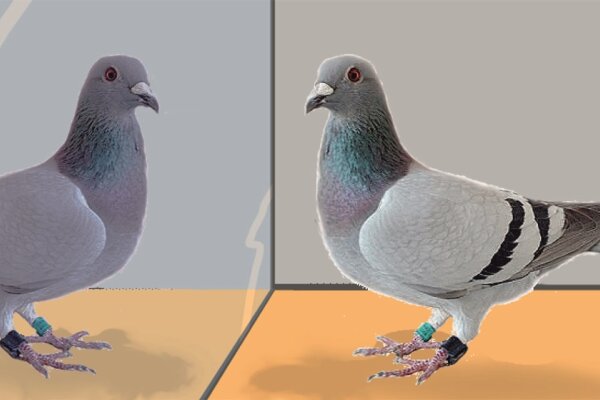2017-04-10

A small number of species are capable of recognizing themselves in the mirror when tested with the mark-and-mirror test. This ability is often seen as evidence of self-recognition and possibly even self-awareness. Strangely, a number of species, for example cats, pigs and dogs, are unable to pass the mark test but can locate rewarding objects by using the reflective properties of a mirror. Thus, these species seem to understand how a visual reflection functions but cannot apply it to their own image. Biopsychologists in Bochum tested this discrepancy in pigeons—a species that does not spontaneously pass the mark test. Indeed, we discovered that pigeons can successfully find a hidden food reward using only the reflection, suggesting that pigeons can also use and potentially understand the reflective properties of mirrors, even in the absence of self-recognition. However, tested under monocular conditions, the pigeons approached and attempted to walk through the mirror rather than approach the physical food, displaying similar behavior to patients with mirror agnosia. These findings clearly show that pigeons do not use the reflection of mirrors to locate reward, but actually see the food peripherally with their near-panoramic vision. A re-evaluation of our current understanding of mirror-mediated behavior might be necessary—especially taking more fully into account species differences in visual field. This study suggests that use of reflections in a mirrored surface as a tool may be less widespread than currently thought.

A small number of species are capable of recognizing themselves in the mirror when tested with the mark-and-mirror test. This ability is often seen as evidence of self-recognition and possibly even self-awareness. Strangely, a number of species, for example cats, pigs and dogs, are unable to pass the mark test but can locate rewarding objects by using the reflective properties of a mirror. Thus, these species seem to understand how a visual reflection functions but cannot apply it to their own image. Biopsychologists in Bochum tested this discrepancy in pigeons—a species that does not spontaneously pass the mark test. Indeed, we discovered that pigeons can successfully find a hidden food reward using only the reflection, suggesting that pigeons can also use and potentially understand the reflective properties of mirrors, even in the absence of self-recognition. However, tested under monocular conditions, the pigeons approached and attempted to walk through the mirror rather than approach the physical food, displaying similar behavior to patients with mirror agnosia. These findings clearly show that pigeons do not use the reflection of mirrors to locate reward, but actually see the food peripherally with their near-panoramic vision. A re-evaluation of our current understanding of mirror-mediated behavior might be necessary—especially taking more fully into account species differences in visual field. This study suggests that use of reflections in a mirrored surface as a tool may be less widespread than currently thought.